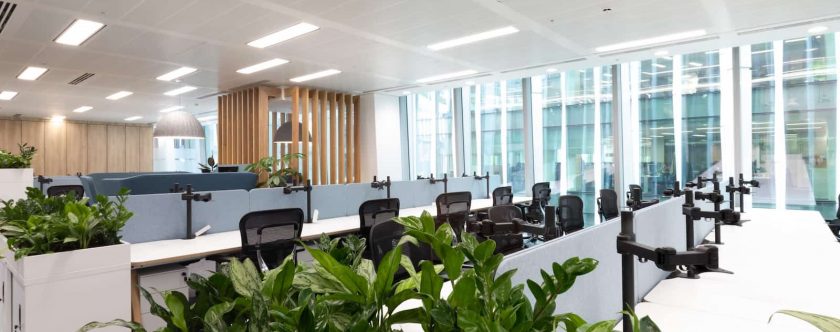How light impacts employee effectiveness and company wellbeing

How light impacts employee effectiveness and company wellbeing
It is a well-known fact that a great working environment is vital to employee wellbeing and productivity. Well-designed spaces, comfortable furniture and state-of-the-art facilities are all features that companies spend a lot of time considering. However, one element that is often overlooked — despite having a huge impact on office ambience — is lighting.
Although it may seem like a background feature, lighting can affect many of the factors that are crucial to employee effectiveness, such as:
• Mood
• Comfort
• Productivity
• Safety
• Retention
However, it is not simply a case of installing as many lights as possible. Research has shown that different types of light have different effects on humans’ physiology and psychology. Warm, low lighting causes fatigue and can lead to slow working and decreased productivity, while bright, blueish light stimulates alertness. However, go too bright (often a danger with the fluorescent lights favoured in offices), and this can cause headaches and stress.
The best lighting solution of all is natural light itself. Natural lighting has been proven to boost mood and energy, and companies are increasingly incorporating natural light into their office setups — using large windows, skylights and careful space-planning to ensure employees receive the most amount of natural light possible. Not only does this improve productivity, it also has the added benefit of significantly reducing energy costs.
However, natural light can come with some disadvantages of its own. In many cases, due to organisational limitations and space constraints, it’s simply not feasible to guarantee an abundance of natural light in the workplace. Therefore, optimal lighting systems should seek to achieve a balance between natural and artificial lighting sources.
Be strategic; implement lighting solutions based on the space. This includes considering the type of tasks that are performed in the space, the needs of the employees occupying the space, and the feasibility of installing the different lighting options available.
Implementing effective workplace lighting that supports efficiency and facilitates productivity requires significant planning. It may seem a daunting undertaking, but installing proper lighting throughout the office to optimise the workplace environment is necessary, and will ultimately lead to improved employee wellbeing and effectiveness.
This news was brought to you by Morgan Pryce, a specialist tenant acquisition agent with offices in Oxford Circus and the City. Morgan Pryce specialises in search, negotiation and project management and works exclusively for tenants.